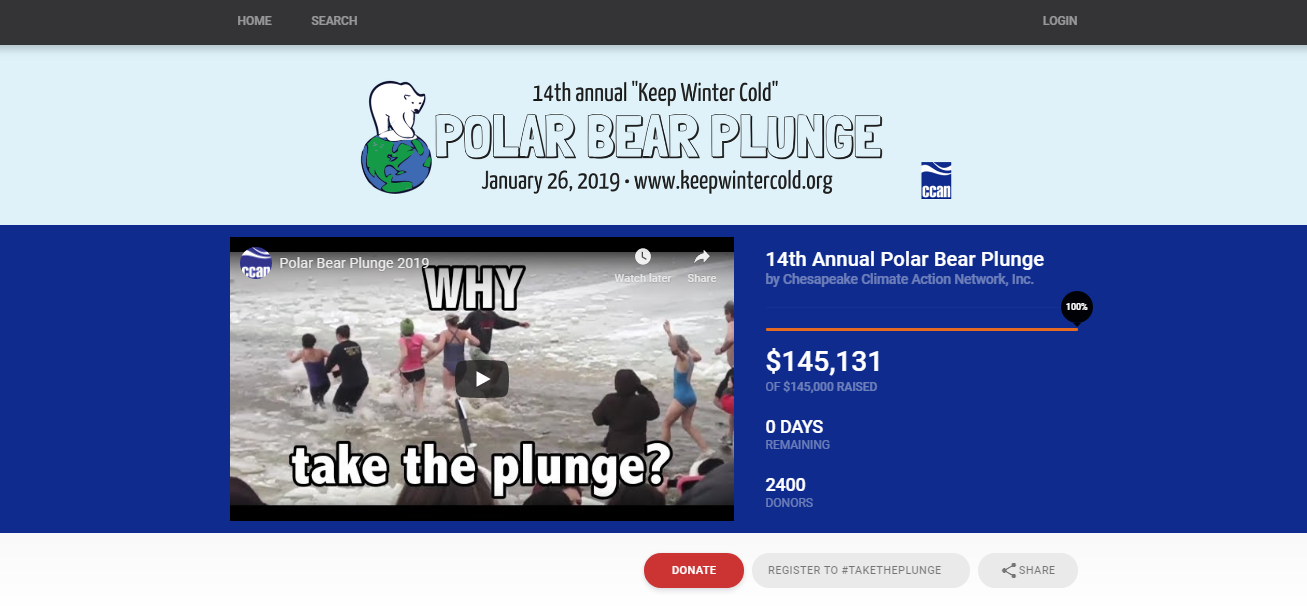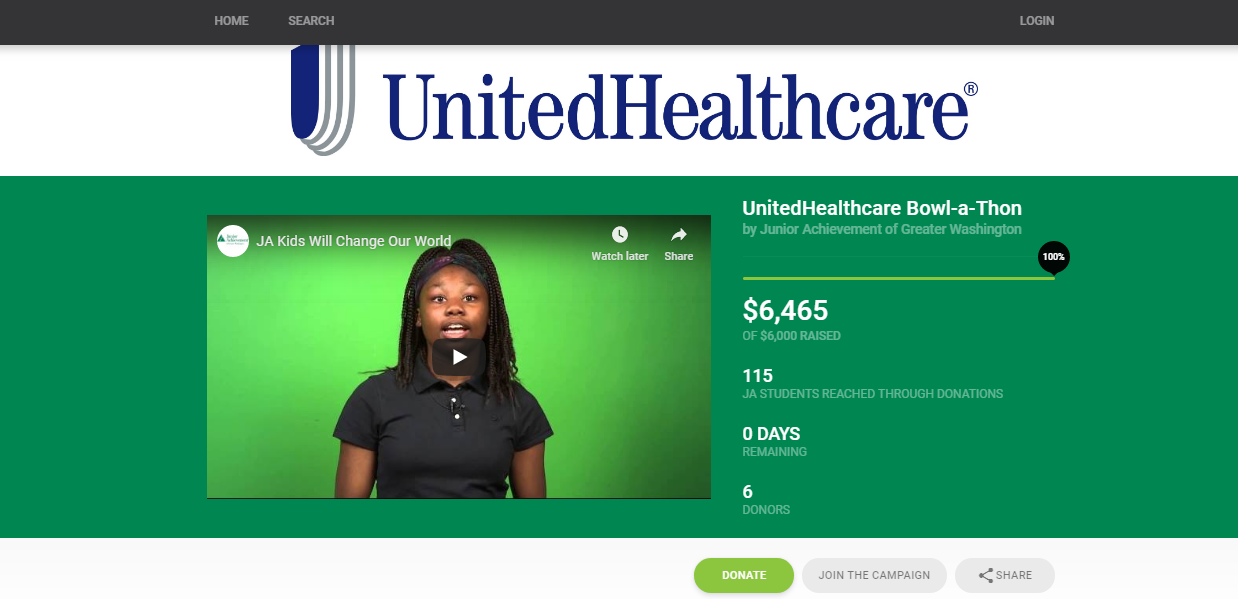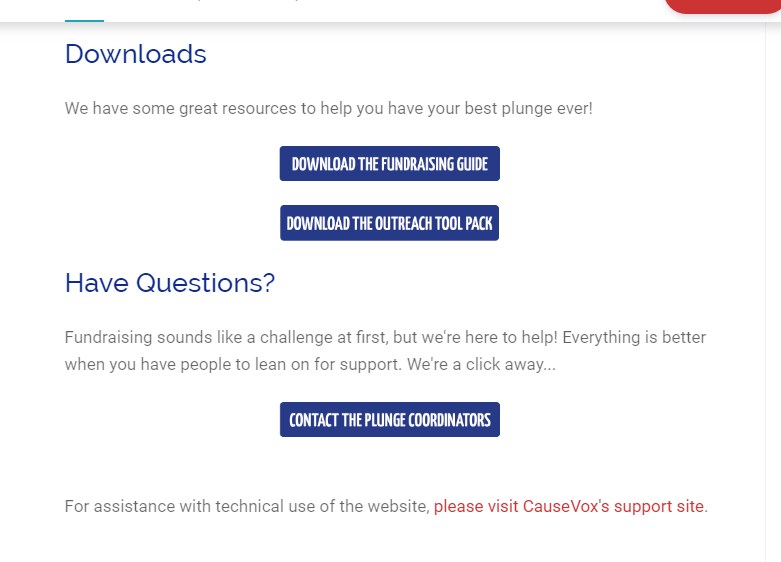Have you ever watched a successful peer to peer fundraising campaign from the outside, and wondered how it worked? How do normal nonprofits without a huge support base or fundraising team raise $21,000 in a day? What makes a campaign fly past its fundraising goals?
At CauseVox, we’re pretty fascinated by successful campaigns, too. We love looking inside and figuring out what makes them tick, especially when we find useful information to help all of our customers raise more money with less stress.
But you know who knows even more than we do?
The nonprofit leaders who run these successful campaigns. That’s why we interviewed Kelly McLaughlin and Lauren Meltzer at the most recent Bridge Conference. They’ve both run tremendously successful peer to peer fundraising campaigns with CauseVox, and we wanted to get the inside scoop, so we could share it with you.
Meet Our Experts
Kelly
Kelly has been in nonprofit management since 2009. She got her start as a volunteer and outreach coordinator, then moved on to work as a Development Assistant and eventually as a Director for Individual Giving. She then became the Director of Donor Engagement at Chesapeake Climate Action Network (CCAN) and is currently the Director of Marketing and Development at Old Greenbelt Theatre.
Kelly used to be laser-focused on Major Giving, but now her area of expertise is broader: “I like to say I spent the first half of my career specializing, but I got bored and spent the second half re-generalizing.”
Kelly has run successful peer to peer and crowdfunding campaigns with CauseVox, including CCAN’S Polar Bear Plunge and Old Greenbelt Theatre’s “Save Me a Seat at the Old Green Belt Theatre” capital campaign, and a 5K race for her daughter’s school.
Lauren
Lauren began at Junior Achievement (JA) as the Manager of Development and Events about five years ago. It was her first real fundraising job, but she had run nonprofits events for almost ten years as a volunteer. She is now the Director of Development and Events.
She made the transition into full-time nonprofit work when she realized “My passion lies in working for a nonprofit that I believe in and can help move the mission forward.”
Lauren runs Play 4 JA (formerly the JA Bowl-a-Thon) on CauseVox. It’s a peer to peer fundraiser where corporate partners form teams to raise money for JA. Each team hosts their own Bowl-a-Thon, and Lauren manages all of it with CauseVox.
The Organizations
CCAN
CCAN is a climate change advocacy organization working in Maryland, Virginia, and the District of Columbia to fight global warming. Founded in 2002, the organization does grassroots advocacy on the local and state levels, with an Action Fund 501c4 arm that pushes specific legislation, like the Clean Energy Jobs Act, and the Clean Energy DC Act.
The fundraising team consisted of Kelly, with part-time help from the organization’s Executive Assistant. They were joined in the effort by the Deputy Director and the policy staff.
Organization Snapshot:
- Fundraising staff: 1.5
- Board: 13 board members, primarily climate change activists. 3 worked with Kelly on fundraising.
- Budget: CCAN broke their first $1M during Kelly’s tenure.
JA
Junior Achievement is the world’s largest education organization for K – 12 students focusing on financial literacy, career readiness, and entrepreneurship. Volunteers deliver education and experiential learning opportunities to help prepare students for bright futures.
The global organization celebrated its 100th anniversary in 2019, and the Washington DC office where Lauren works was founded in 1965. She is part of a seven-person development team at JA.
Organization Snapshot:
- Fundraising staff: 7, of which 2 are events-focused.
- Board: 55 members, executives in various fields
- Budget: $5M annually
The Campaigns
CCAN
When Kelly came on at CCAN, the Polar Bear Plunge was CCAN’s sole individual giving effort. “Folks jump into the Potomac River, and raise pledges from family and friends, just like a fun run,” Kelly says.
The event had always been run by non-fundraising staff. In fact, Kelly was the first fundraising staff person the organization had hired. “It did okay year to year, and they raised enough that it was worth the staff time that went into it.” Kelly saw the potential for it to grow.
The Polar Bear Plunge was Kelly’s first time running a peer to peer event. Instead of continuing as before, she decided to tie it into her other big fundraising priority–creating an individual giving program.
Kelly knew that if she was going to do peer to peer fundraising right, she needed to do some research.
She reached out to other organizations for tips, browsed platforms, and asked detailed questions about the previous year’s process. She chose CauseVox for its ease-of-use and great support.
Since Kelly wasn’t spending her time wrestling clunky software, she could put her effort into supporting the plungers with training and tools. “Basically we were empowering people to fundraise better,” she says.
Kelly set a moderate growth goal her first time out. “I took the average growth over the prior three years and added that to the prior year’s total. But then we shot way past that, so the next year we set the target at an average of that year and the prior year growth…and they shot past it a second time.”
The Polar Bear Plunge typically raised $85,000-$100,000 in previous years. The first year with CauseVox, they raised $128,833. The second year, they raised $145,000.

JA
The Washington DC JA had fundraised with a Bowl-a-Thon for more than 50 years. Recently, they’ve restructured and renamed the event, creating Play 4 JA.
What JA does is a little different than many other peer to peer campaigns. “We have about 20 individual events a year,” says Lauren. Each event is independent, with its own fundraising website, but they all fall under the larger umbrella campaign, with a total of about 1,700 participants who form peer to peer fundraising teams.
Who are these 1,700 people? “The majority, although not all, of the Play 4 JA partners we work with are Board companies or companies in the area who began volunteering and wanted to expand their partnership,” Lauren explains. Once a corporate partner is solidified the JA team works with them to create their own fundraising plan.

Lauren set out to raise $505,000 in 2018-2019. At the time of this post, JA had raised $337,091, and is still going strong.
7 P2P Lessons Learned From Bridge Conference
Kelly and Lauren had a ton of wisdom to share. Here are the top seven lessons we learned from their presentation.
1. There’s More Than One Way To Succeed
As we can see from Kelly and Lauren’s campaigns, there isn’t just one way to be successful with peer to peer fundraising. Organizations with different levels of budget, board engagement, staff, and resources can all benefit from peer to peer.
At CCAN, peer to peer offered a way to build an individual donor program and move away from relying solely on foundation funding.
JA had different needs; their peer to peer Bowl-a-Thon had long been their fundraising hallmark. But over time they had a bit of event fatigue. Lauren used CauseVox to launch a new structure with a new name, Play 4 JA, to reinvigorate the event.
Both organizations used CauseVox in different ways to get great results. Since it was easy to customize CauseVox to their needs, neither organization had to settle for cookie-cutter solutions.
2. P2P Helps You Fundraise Smarter
Peer to peer fundraising is about doing what works, not what you’ve always done. Both Kelly and Lauren used CauseVox to solve problems and switch things up, with tremendous success.
It’s a pervasive myth that peer to peer fundraising requires having a huge group of already-existing fundraisers. Not so! In fact, Kelly found that increasing the number of Polar Plungers shouldn’t even be her goal–keeping the ones she had year-to-year was more important.
During her research period, Kelly got some great advice.
Another nonprofit professional told her, “There are two strategies to grow your p2p event, and that’s to get more people to fundraise for you OR get the same people to fundraise smarter for you,” Kelly told us. “That was my big ‘aha’ moment. Looking back at CCAN’s materials, I realized they were going for quantity, and that was having diminished returns as we maxed out the number of folks willing to jump into freezing water. “
Instead of trying to recruit more fundraisers, Kelly focused on helping each polar bear plunger raise more.
Lauren knew it was time to revamp the Bowl-a-Thon. “When I first started we were blowing our goal out of the water – over $500k each year. Over time, we had a bit of event fatigue and corporate partners who changed their structure and therefore we had to adapt,” she says. Her new structure, “Play 4 JA” gives peer to peer fundraisers options. Many still bowl, but others choose to fundraise for JA with Top Golf, Escape Rooms, or Happy Hours.
Changing things up reinvigorated the fundraiser. Lauren says, “This enabled us to re-engage participants who may have gotten ‘bored’ after many years of bowling, while opening up other activities to the current participants and future prospects.”
3. Give Your P2P Fundraisers Tools
Kelly and Lauren both wanted to empower better fundraising, so they created tools to help their peer to peer fundraisers raise more.
Kelly put together a fundraising guide and toolkit, “I talked to a lot of plungers from prior years to formulate strategy when I took over, and the number one thing I heard was ‘Don’t make me create content,’ – so we created social media graphics and posts for people to copy and paste.”
She provided the plungers with step-by-step instructions, including a welcome email with specific instructions to start things off right. It explained the fundraising tools, but also told plungers, “If you do nothing else, (1) Donate to yourself. (2) As 2-3 family members to donate. (3) THEN post to social.” This set plungers up to raise more, as Kelly explains, “You’re more likely to get donations from friends on the internet if you have some money on your page already.”
Kelly also offered to consult with plungers on the phone, which a handful took her up on.

Lauren worked with JA’s Marketing and Communications team to develop a toolkit flash drive of useful information, including flyers, email templates, donation solicitation letter templates, an 8-week fundraising plan, and recruitment and fundraising best practices documents.
With these tools, fundraisers are in a better position to raise money. Lauren’s corporate partners know exactly what to do. Kelly found that even plungers who had done well in previous years were raising more with the guidelines:
“It was our mid-level fundraisers that made a big leap. One staff member, for example, raised $300 the prior year, then raised over $2,000 the next year. Those were the kinds of gains we saw. Or a first-year fundraiser who raised $1,000. When I reached out to her to ask what she did, she said, ‘I just did what you told me to do. It worked!’”
4. Don’t Waste Time On Admin
Both Kelly and Lauren had a lot to do, and wasting time on tedious administrative tasks simply wasn’t an option for either of them.
When Kelly was planning her campaign, she made an important discovery. Most of the staff’s time had been spent wrestling with the clunky, hard-to-use fundraising platform they’d been using. Plungers had trouble using it, often needing staff help just to get started.
When she switched to CauseVox, this troubleshooting and IT support became unnecessary. CauseVox made it easy for plungers to create fundraising pages, join teams, and share their pages. Instead, Kelly could spend her time empowering plungers to fundraise, focusing on how to raise money instead of how to operate frustrating software.
With 20 separate events to manage, Lauren definitely didn’t have time for tedium. She needed a simple, easy-to-replicate system for supporting the coordinators who kept the fundraisers running smoothly at the partnering companies.
“We are able to help on the back end with website registration, donation allocation, team creation, and running reports – all easy to use processes on CauseVox,” Lauren says.
Since these processes are all taken care of with CauseVox, Lauren and her team can spend their time building their relationships with their corporate partners and helping them fundraise. They teach the coordinators about each tool in the toolkit, and discuss internal strategy for each company, so the coordinators can find captains, form teams, and set goals.

5. Support Your P2P Fundraisers Throughout The Campaign
Keeping peer to peer fundraisers engaged throughout the process is essential. If they drop off or lose steam, there goes your campaign! Kelly and Lauren both took steps to keep participants enthusiastic and interested the entire time.
Each week, CCAN sent an email update to all the plungers, showing them the campaign’s progress.
They included a “This Week’s To Do” section to highlight the action they most wanted the plungers to take, a “Bonus Points” section for extra good things to do, and a tip from a fellow plunger.
Lauren hosted her partners at an annual summer planning meet to jumpstart the process and debrief on the past events. Since the summer could be more than six months out from a company’s event, she also holds a meeting closer to their launch.
Since each company event is managed by coordinator, Lauren made sure that they had all the tools they needed to keep peer to peer fundraisers engaged. The toolkit included all the rallying messages they’d need, including:
- A Save the Date
- A reminder of date/time/location and instructions on how to signup online with CauseVox
- An encouragement focused email for participants
- A Halfway to Goal message
- Social Media Language
- A Thank You for Bowling message for participants
6. Try A Soft Launch
This tip comes from Kelly, who applied her years of Major Gifts experience to her peer to peer campaign. “We all know when you’re doing a [capital] campaign you start with a quiet phase…” Kelly says. “We started with a quiet phase promoting sign-ups ONLY to people who had plunged with us before. We marketed it as a ‘chance to one-up anyone who comes after you.’”
This quiet phase laid the groundwork for a strong launch. “The quiet phase meant that we weren’t launching the campaign at $0, it meant we were launching at more like $30,000 of $100,000,” Kelly notes. This spurred supporters to keep the momentum going. “I think that makes people go, ‘WOW, I just got an email that this is public and they’ve ALREADY raised this much money, I better get a move on!” she says.
7. Create a Thank You and Follow Up Plan
The end of one campaign lays the foundations for your next one, so it’s important to plan for it.
Kelly sent plungers pictures and videos along with her thank you email. She was most interested in retaining the plungers, so her retention efforts prioritized them over donors. Kelly points out:
“If we could retain more of our plungers, we’d by default retain more of our donors. If my aunt gives to my plunge but doesn’t care about the organization, and then I don’t do it, you lose my aunt…but if I do it for 5 years, you better believe my aunt is gonna donate all 5 years. But if we as an organization went and solicited my aunt, we wouldn’t get a penny because she has other giving priorities.”
Kelly connected her donors with “their” plunger in her acknowledgments, too. “We sent another email to all donors, thanking them for contributing, reminding them what they contributed and TO WHOM. And then we gave them a primer on our organization with links to information on our site,” she says.
While she cared the most about retaining plungers, Kelly did give donors opportunities to connect with CCAN. “For donors in DC, MD, and VA we sent a series of 3 emails inviting them to subscribe to our emails to get involved,” she says.
Lauren is continually adapting and improving her acknowledgment process. “Each donor receives a thank you, and all participants receive thank yous with photos after each event. Additionally, any donor who donates over a certain amount gets recognized in our annual report.”
Donors and peer to peer fundraisers are added to the JA database, and receive communications throughout the year. “Through CauseVox, we also have the ability to pull reports of all participants by company so we can be sure to engage them the following year,” Lauren says.
Try These Tips On Your Next Peer To Peer Campaign
Kelly and Lauren are terrific fundraisers, that’s for sure. But, they didn’t do anything you can’t. They didn’t have endless budgets or armies of staff, they just had the right tools and followed the very best practices.
With CauseVox, you too can fundraise smarter, equip your fundraisers, and support them throughout the campaign with ease. You won’t have to waste time on admin, can automate back-office tasks, and can free yourself up to raise money instead of wrestling clunky software.
Want to see just how easy running peer to peer fundraising is with CauseVox?




